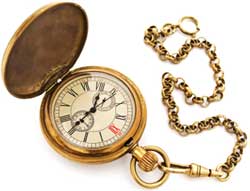 Understanding the significance of employee service recognition begins with a journey back to the early days of workplace acknowledgment in America. The origins of employee recognition and its evolution provide insights into why recognizing service milestones is crucial today.
Understanding the significance of employee service recognition begins with a journey back to the early days of workplace acknowledgment in America. The origins of employee recognition and its evolution provide insights into why recognizing service milestones is crucial today.
The Industrial Revolution: The Birth of Employee Recognition
During the Industrial Revolution, workplace dynamics underwent significant changes. Initially, many employers believed that monetary compensation and job security were sufficient motivators. However, forward-thinking companies began experimenting with higher wages and other incentives to boost productivity and loyalty. Researchers eventually discovered that positive reinforcement through acknowledgment and rewards had a profound impact on employee behavior, leading to the formalization of employee recognition programs.
Early Service Milestones: Limited But Impactful
In the early stages, recognition was limited to long-term milestones, typically acknowledging employees after 25 years of service or upon retirement. This rudimentary approach reflected an early understanding of the motivational power of recognition. Over time, the scope of recognition programs expanded dramatically. Today, service anniversaries are celebrated at many career milestones, not just at the quarter-century mark or retirement.
Historical Examples of the use of Recognition

The practice of recognizing employees for their service can be traced back over 2,600 years to Cyrus the Great, who motivated his workers with personal acknowledgments such as a pat on the shoulder, a refreshing beverage, and a coin bearing his likeness.
This early example demonstrates the lasting value of personal recognition in inspiring and motivating employees.
Celebrating Service - Benefits the employee and the company!
 During the Industrial Revolution, celebrating an employee's 25-year service milestone was not only a personal achievement for the employee, but also a testament to the company's stability and desirability as a workplace. This tradition helped shape the company’s reputation, making it more attractive to potential hires. Retaining employees for long periods was essential, particularly in manufacturing sectors where training new workers required significant investment. Service and retirement awards acknowledged the dedication of long-term employees, encouraging them to remain with the company.
During the Industrial Revolution, celebrating an employee's 25-year service milestone was not only a personal achievement for the employee, but also a testament to the company's stability and desirability as a workplace. This tradition helped shape the company’s reputation, making it more attractive to potential hires. Retaining employees for long periods was essential, particularly in manufacturing sectors where training new workers required significant investment. Service and retirement awards acknowledged the dedication of long-term employees, encouraging them to remain with the company.
Modern Recognition: More Frequent and Diverse
Today, the approach to employee recognition has evolved significantly. Companies now celebrate various service milestones, starting as early as one year. This shift reflects the changing demographics and expectations of the modern workforce. Recognizing employees at different stages of their careers, from onboarding to retirement, helps create a culture of appreciation and loyalty.
Conclusion: The Lasting Impact of Recognition
The history of employee service recognition shows that while the methods and frequency of acknowledgment have evolved, the core principle remains the same: recognizing employees for their service and contributions fosters loyalty, boosts morale, and enhances overall company performance.
By understanding and appreciating the history of employee recognition, organizations can implement more effective and meaningful service award programs today.
Click next to continue reading the Guide to Employee Service Awards
Prev: What are Service Awards - a Definition Next: What's the Value Service Recognition


Or, see Service Award Guide's contents (List of Topics) to jump to specific topics
 Ready to Start? - Here's the first step to getting your Employee Service Awards Program started!
Ready to Start? - Here's the first step to getting your Employee Service Awards Program started!
Call now to talk to a Recognition Specialist
call 630-954-1287 (M-F, 8:30 am - 5:00 pm CST),
or
Use the FORM below to request FREE information.


 Understanding the significance of employee service recognition begins with a journey back to the early days of workplace acknowledgment in America. The origins of employee recognition and its evolution provide insights into why recognizing service milestones is crucial today.
Understanding the significance of employee service recognition begins with a journey back to the early days of workplace acknowledgment in America. The origins of employee recognition and its evolution provide insights into why recognizing service milestones is crucial today.



 Ready to Start? - Here's the first step to getting your Employee Service Awards Program started!
Ready to Start? - Here's the first step to getting your Employee Service Awards Program started!

